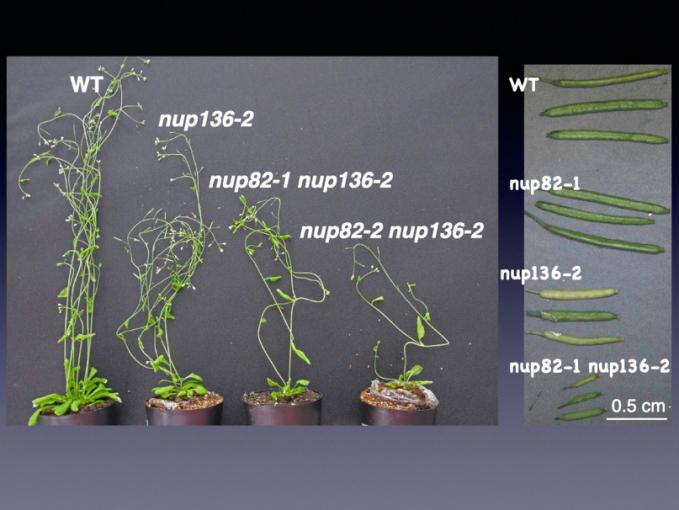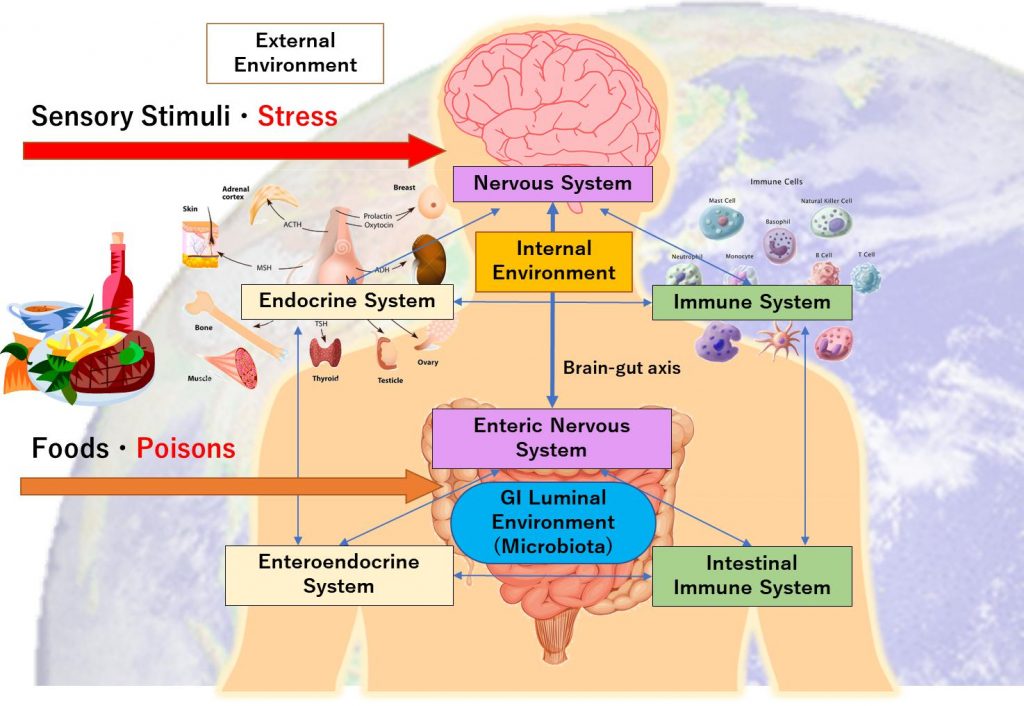Environmental Physiology

- account_circleKentaro TamuraPhD, Assoc. Prof.
- account_circleShin-ichiro KarakiPhD, Research Asst. Prof.
- Website:https://dfns.u-shizuoka-ken.ac.jp/labs/ecophys/
- Mail:tamura@u-shizuoka-ken.ac.jp
- Phone:+81-54-264-5707
Plant and animal physiology in response to environmental signals.
- 1. Environmental adaptation with the nucleocytoplasmic transport system
Nuclear pore complex (NPC) is the sole gateway between the nucleus and cytoplasm. The NPC is large multi-protein complex that consists of multiple copies of more than 30 nucleoporins (Nups). We have revealed plant NPC structure by using proteomic and imaging techniques.
- 2. Structural determinations of plant nucleus
The nuclear lamina, which is attached to the inner nuclear membrane and chromatin, provides mechanical support to the nucleus. Plants have developed a unique lamina-like structure that shapes the nuclear envelope. Although several studies have suggested candidates of component proteins of the plant nuclear lamina, none have been investigated directly. To reveal the regulatory mechanisms underlying plant nuclear structure, we have screened and isolated many Arabidopsis mutants that show abnormal nuclear shape. Characterisation of responsible genes for the mutants will get insight on how plant develops and differentiates its nucleus.
- 3. Sensing of intestinal luminal environment and regulation of intestinal physiological functions
Lumen of the gastrointestinal (GI) tract is external environment controlled by the living body. We are studying the sensing mechanism of the GI luminal environment as an external environment, and the regulatory mechanism of the GI physiological functions including GI motility, transepithelial substance transport, and mucosal barrier function, by the enteric nervous-endocrine-immune system.
- Figure 1
- Nucleoporin 136 and 82 function redundantly in plant development

- Figure 2
- External environment in the body – Gastrointestinal (GI) luminal environment

References
- J Exp Bot. 71, 6273-6281 (2020)
- J Plant Res. 133, 449-455 (2020)
- New Phytol. 226, 798-808 (2020)
- Nat Commun. 11, 5914 (2020)
- J Nutr Sci Vitaminol. 65, 498-506 (2019)
- Physiol Rep. 4, e12790 (2016)
- Pflugers Arch. 461, 141-152 (2011)
- Cell Tissue Res. 324, 353-360 (2006)